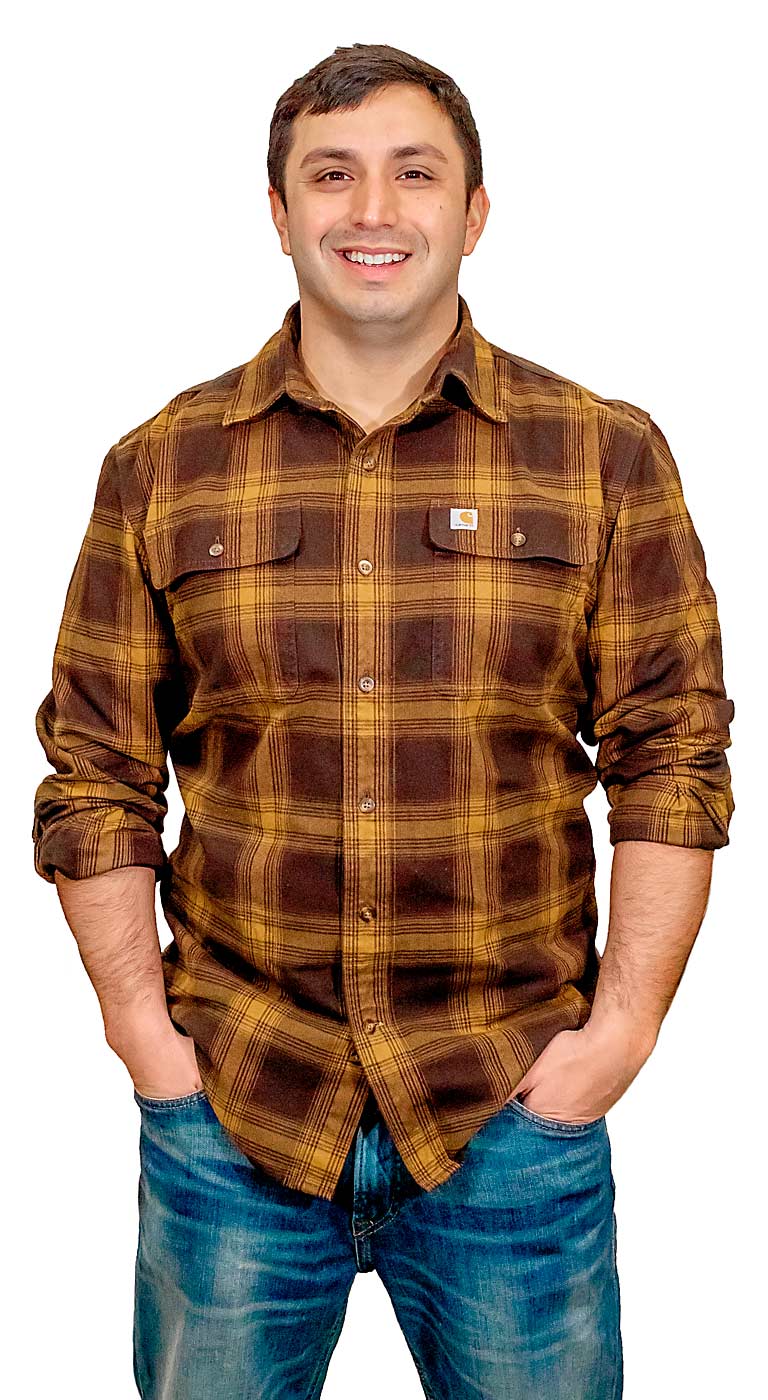family background / Ruben is a second-generation grower who has worked as a journeyman electrician to purchase his first orchard. He is the son of Liduvina and Ruben Canales.
age/34
grower/Benton County, Washington
crops/Apples, cherries
business/Canales Orchards
How did you get your start?
I grew up surrounded by an apple orchard, and my parents would take me out to the nursery to help clean up the trees to keep me occupied and not bored.
During my summers and after school I’d help my father with orchard tasks, such as changing water on the four-wheeler, or helping mom thin trees or driving tractors.
As a teen, it was fun being the first one to arrive at a block for work and the last one to leave.
What do you do in your current job?
After high school, I pursued an electrical degree. It wasn’t because I didn’t want to work in agriculture, it was because I knew I’d need some kind of financing to get me into agriculture.
It’s not easy wanting to farm on your own, and I remember doing the math when I was young, and it was going to require money.
So, I chose electrical work — finishing school at Perry Technical Institute, working toward becoming a journeyman and saving everything I could.
How does your primary job fit into the plan?
Early on, I knew I’d need to have a primary occupation. I needed those pay stubs and history of income to get loans that would start and support my property.
When a piece of property opened up, I had the funds set aside to present my business plan and secure a USDA loan. At that time, I would not have qualified with my wages alone.
Because I was able to save enough money and successfully defend my business plan, I was approved.
How did you start your orchard?
I started with 10 acres of undeveloped land. Considering the cost of trees, I couldn’t buy trees like everyone else where they were $8 to $10 a tree, depending on where they were from, and more if they had a patent.
My father stepped in because he knows how to graft trees, and he’s done it since he started orcharding. In my eyes, he’s one of the best tree grafters. With his help, I purchased baby rootstocks that were not ready for grafting.
Then I planted them in a nursery. Come August, we started grafting them to Honeycrisp and Gala. The following year I transplanted many of them over to the orchard. Making my own trees was the easy part, training them was the difficult part. It takes a lot of work to train an apple orchard into a modern, high-density trellis system. There were days where I doubted myself for doing it, but I had my mind set to get it done right.
Why go with a modern training system?
It’s scary because it’s a lot of money going into the ground. When I was looking at a 9.5-foot by 1.5-foot spacing, you’re looking at a lot of trees and structure, which is very expensive. Even with the loan, I couldn’t afford buying the trees to support high-density.
That’s why I had to grow my own trees and deal with all of the intensive training that goes along with it. I estimated that I could achieve more yields per acre with a modern system and hoped that by the third leaf I would produce 80 to 90 bins per acre. I learned that it doesn’t work that way and that the trees need to mature. I had to temper my excitement and not look too far ahead.
Thankfully, taking those baby steps early on, I’m starting to see those numbers. I’ve also learned it’s not just about getting the yield, it’s about the quality I’m able to grow. High-density gives me more consistent sunlight and color without the drawbacks of foliar growth.
What would you tell younger growers?
When I first started, I didn’t have the funds to pay for someone else to do the farm tasks — it was just me. I need to do as much as I can myself.
I work my days as an electrician, head home, then find the will to head out to the orchard, get on the tractor, train some of the trees in one of the rows and do the things that help save money. You must have that will to get out and do it each day.
You will struggle to find success without personal drive and motivation. Starting your own farm is very doable. It’s the greatest feeling when you start to see your fruit picked and seeing the payoff of that labor.
—TJ Mullinax







Leave A Comment